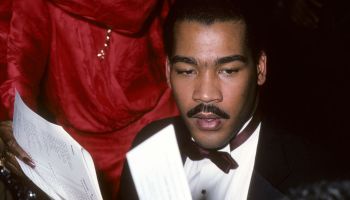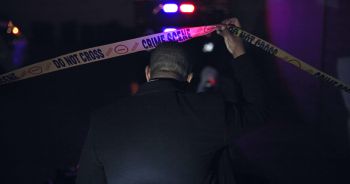Kwanzaa is a unique African American celebration with focus on the traditional African values of family, community responsibility, commerce, and self-improvement. Kwanzaa is neither political nor religious and despite some misconceptions, is not a substitute for Christmas. It is simply a time of reaffirming African-American people, their ancestors and culture. Kwanzaa, which means “first fruits of the harvest” in the African language Kiswahili, has gained tremendous acceptance. Since its founding in 1966 by Dr. Maulana Karenga, Kwanzaa has come to be observed by more than18 million people worldwide, as reported by the New York Times. When establishing Kwanzaa in 1966, Dr. Karenga included an additional “a” to the end of the spelling to reflect the difference between the African American celebration (kwanzaa) and the Motherland spelling (kwanza).
The First Day of Kwanzaa (December 26)
On the first day of Kwanzaa the black candle is lit in the Kinara. The black candle represents the first principle – Umoja (oo-MOH-jah): Unity. The person who lights the candle might make a statement about the first principle and its meaning. Sometimes a passage or poem is read relating to what the principle means and how it relates to their life.
The Second Day of Kwanzaa (December 27)
On the second day the black candle is again lit, as well as the farthest red candle on the left. This represents the 2nd principle of Kwanzaa – Kujichagulia (koo-jee-chah-goo-LEE-ah): Self-Determination.
Again a statement about the second principle and its meaning might be made. Or possibly a passage or poem is spoken or read which relates to what the principle means and how it relates to their life. The family shares the Unity cup and the candles are extinguished.
The Third Day of Kwanzaa (December 28)
On the third day the black candle is lit, then the farthest left red, and then the farthest right green candle. This represents the 3rd principle of Kwanzaa – Ujima (oo-JEE-mah): Collective work and responsibility.
The third principle is discussed. The family shares the Unity cup and the candles are extinguished.
The Fourth Day of Kwanzaa (December 29)
On the fourth day the black candle is lit, then the farthest left red, the farthest right green. And then the next red candle on the left. This represents the 4th principle of Kwanzaa – Ujamaa (oo-jah-MAH): Collective economics.
The fourth principle is discussed. The family shares the Unity cup and the candles are extinguished.
The Fifth Day of Kwanzaa (December 30)
On the fifth day the black candle is lit, then the farthest left red, the farthest right green, the next red and then the next green candle. This represents the 5th principle of Kwanzaa – Nia (NEE-ah): Purpose.
The fifth principle is discussed. The family shares the Unity cup and the candles are extinguished.
The Sixth Day of Kwanzaa (December 31)
On the sixth day the black candle is lit, then the farthest left red, the farthest right green, the next red, the next green and then the final red candle. This represents the 6th principle of Kwanzaa – Kuumba (koo-OOM-bah): Creativity.
The sixth day, which occurs on New Years Eve, is a special day . This is the day of the Kwanzaa Karamu or Kwanzaa Feast. In the spirit of celebration many families invite their friends and family to join in the festivities. On this special day we remember our ancestors when the Unity cup is shared. After everyone has taken a drink the candles are extinguished
The Seventh Day of Kwanzaa (January 1)
On the seventh day the black candle is lit, then the farthest left red, the farthest right green, the next red candle, the next green, the final red and then the final green candle. This represents the 7th principle of Kwanzaa – Imani (ee-MAH-nee): Faith.
The seventh principle is discussed. The family shares the Unity cup and all seven candles are extinguished. Kwanzaa is over.












